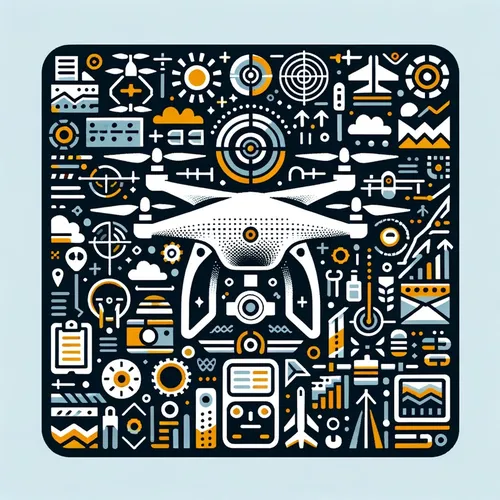Drones Soar in 2025: AI, Strict Regs, and Big Bucks Reshape the Skies
- Author
- Quiet. Please
- Published
- Sat 30 Aug 2025
- Episode Link
- https://www.spreaker.com/episode/drones-soar-in-2025-ai-strict-regs-and-big-bucks-reshape-the-skies--67560613
This is you Professional Drone Pilot: Flight Tips & Industry Updates podcast.
Professional drone operations are at the leading edge of technological advancement and business opportunity in 2025, with new developments in equipment, regulation, and market demand reshaping the industry daily. For commercial drone pilots and aerial specialists, mastering advanced flight techniques remains pivotal. With next-generation drones now boasting twenty to thirty percent longer battery life due to improved energy density, operators can cover more ground per mission. Enhanced propulsion systems and aerodynamic propeller designs provide better stability and accurate positioning, even in unpredictable weather. Integrating artificial intelligence-driven navigation boosts flight efficiency, and advanced cooling systems prevent overheating on challenging assignments, so ensuring your fleet is updated and well-maintained is more important than ever. Drone industry analysis by Archive Market Research reveals that predictive maintenance powered by data analytics is gaining traction, minimizing downtime and enabling technicians to schedule service before hardware issues arise. Platforms like Airdata UAV have become essential tools, offering real-time reporting on flight performance, equipment health, and compliance—automating maintenance scheduling and reducing risk of costly errors. This year’s market is projected to grow at a steady five point three percent annual rate through 2033 as businesses expand the use of drones for inspections, mapping, and creative services.
Certification requirements continue to evolve, with the Federal Aviation Administration’s online recurrent training now mandatory biennially to keep knowledge current. Passing the Unmanned Aircraft General Small Knowledge Test, maintaining up-to-date records, and proper drone registration with remote identification are all critical to staying compliant. Internationally, differentiation between basic and advanced operational licenses is more pronounced, particularly as authorities adapt to complex urban environments and tighter airspace controls. Insurance requirements are growing stricter as well, with liability coverage now viewed as essential for any client-facing operation.
Drone-based business opportunities are surging in sectors like infrastructure inspection, precision agriculture, and creative media, with drone-as-a-service models simplifying entry for operators while demanding higher professional standards. Keeping clients satisfied requires setting transparent pricing, communicating value, and delivering reliable data—key points as organizations become increasingly discerning about their aerial partners.
Recent industry news spotlights the first fully autonomous pipeline inspection in Texas, a record-breaking aerial mapping project for wildfire response in California, and the Federal Aviation Administration's announcement of a forthcoming test program for extended beyond visual line of sight waivers.
Looking to the future, listeners should prepare for further integration of artificial intelligence, continued regulatory refinement, and expanded insurance obligations. Action items for the coming week include updating your equipment maintenance logs, reviewing your certification status, and considering an insurance policy review. Stay proactive, stay safe, and position yourself for growth as the drone industry heads into another transformative year.
Thanks for tuning in, and come back next week for more. This has been a Quiet Please production, and for more, check out QuietPlease dot AI.
For more http://www.quietplease.ai
Get the best deals https://amzn.to/3ODvOta
